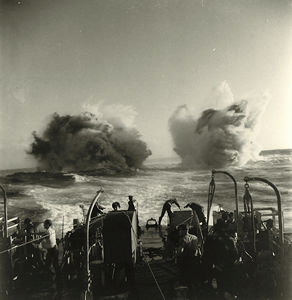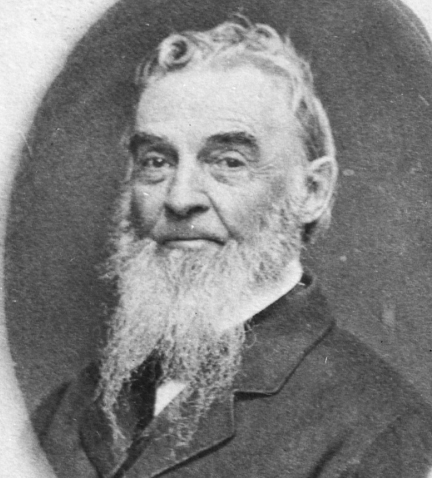Browse "Military Engagements"
-
Article
Canada and the Second Battle of Ypres
The Second Battle of Ypres was fought during the First World War from 22 April to 25 May 1915. It was the first major battle fought by Canadian troops in the Great War. The battle took place on the Ypres salient on the Western Front, in Belgium, outside the city of Ypres (now known by its Flemish name, Ieper). The untested Canadians distinguished themselves as a determined fighting force, resisting the horror of the first large-scale poison gas attack in modern history. Canadian troops held a strategically critical section of the frontline until reinforcements could be brought in. More than 6,500 Canadians were killed, wounded or captured in the Second Battle of Ypres.
"https://d2ttikhf7xbzbs.cloudfront.net/media/new_article_images/ypres/a022718.jpg" // resources/views/front/categories/view.blade.php
https://d2ttikhf7xbzbs.cloudfront.net/media/new_article_images/ypres/a022718.jpg
-
Article
Canada and Gas Warfare
Poison gas was used throughout the First World War by almost all armies. Its widespread use was unique in the history of warfare. The various types of gas, delivered by canisters, projectors, or shell, killed, maimed, and wore down morale. By 1918, soldiers of all armies encountered gas frequently while serving at the Western Front. Canadian soldiers were among the first to face the death clouds, at the Second Battle of Ypres in April 1915. At least 11,572 Canadian soldiers were casualties of poison gas, yet many were denied pensions after the war. During the Second World War, chemical weapons were not used on the battlefield; however, the Suffield Experimental Station in Alberta developed and tested chemical and biological weapons beginning in 1941. From about the middle of the 20th century, Canadian officials worked on the global stage to ban chemical weapons, and in the 1990s, Canada signed the Chemical Weapons Convention (see Arms Control and Disarmament.)
"https://d2ttikhf7xbzbs.cloudfront.net/media/new_article_images/GasWarfare/a002897-v8.jpg" // resources/views/front/categories/view.blade.php
https://d2ttikhf7xbzbs.cloudfront.net/media/new_article_images/GasWarfare/a002897-v8.jpg
-
Article
Canada and the Battle of the Atlantic (Plain-Language Summary)
The Battle of the Atlantic was the longest battle of the Second World War. It lasted between 3 September 1939 and 8 May 1945. The Atlantic Ocean was important for the Allies because they needed to send supplies and people by ship from North America to Europe. German U-boats (submarines) attacked and sank many of these ships. Canada played an important role in the Battle of the Atlantic. The Canadian navy and air force protected convoys of supply ships and hunted U-boats. The Canadian merchant navy transported troops, food and other supplies. (This is a plain-language summary of the Battle of the Atlantic. If you are interested in reading about this topic in more depth, please see our full-length entry, Canada and the Battle of the Atlantic.)
"https://d2ttikhf7xbzbs.cloudfront.net/media/media/8cb80cb6-7ee5-4b1d-b742-922466dbc5f3.jpg" // resources/views/front/categories/view.blade.php
https://d2ttikhf7xbzbs.cloudfront.net/media/media/8cb80cb6-7ee5-4b1d-b742-922466dbc5f3.jpg
-
Article
Canada and the Battle of the Scheldt
The Battle of the Scheldt was fought in northern Belgium and southwestern Netherlands in 1944 during the Second World War. It was part of the Allied campaign to liberate northwestern Europe and defeat Nazi Germany. The First Canadian Army played a crucial role in clearing the Scheldt of German forces, opening crucial supply lines via the port of Antwerp. However, this victory came at a cost. The Allies suffered nearly 13,000 casualties during the battle, including more than 6,300 Canadians.
"https://d2ttikhf7xbzbs.cloudfront.net/BattleScheldt/Graves_Battle_Scheldt.jpg" // resources/views/front/categories/view.blade.php
https://d2ttikhf7xbzbs.cloudfront.net/BattleScheldt/Graves_Battle_Scheldt.jpg
-
Article
Canada and the Iraq War
The Iraq War (2003–11) was fought against Iraq by a coalition of 46 countries led by the United States and the United Kingdom. The decision to go to war was based in part on faulty intelligence and assumptions about the Iraqi manufacture and storage of weapons of mass destruction (WMD). The war was conducted in two phases, a brief conventional one in March and April 2003 and a much longer counterinsurgency operation, which ended in December 2011. Despite American and British pressure, Canadian Prime Minister Jean Chrétien refused to publicly support the war. Ostensibly, this was because there was no United Nations (UN) Security Council resolution authorizing the operation, although several other factors were involved.
"https://d2ttikhf7xbzbs.cloudfront.net/media/media/b3532769-6fc5-4950-bcff-36d917baf2bc.jpg" // resources/views/front/categories/view.blade.php
https://d2ttikhf7xbzbs.cloudfront.net/media/media/b3532769-6fc5-4950-bcff-36d917baf2bc.jpg
-
Article
Capitulation of Montreal 1760
The Battle of the Plains of Abraham and the capitulation of Quebec City in 1759 made the strategic situation of New France desperate. Despite a victory at the Battle of Sainte-Foy, the French forces found themselves isolated in Montreal by the British. The French commander, François-Gaston de Lévis, wanted to continue the fight. However, to avoid a pointless loss of life, the Governor of New France, Pierre-Rigaud de Vaudreuil, decided to surrender the city. With the capitulation of Montreal to the British forces on 8 September 1760, Great Britain completed its conquest of New France.
"https://d2ttikhf7xbzbs.cloudfront.net/media/Seven_Years_War_Map.jpg" // resources/views/front/categories/view.blade.php
https://d2ttikhf7xbzbs.cloudfront.net/media/Seven_Years_War_Map.jpg
-
Article
Capture of Detroit, War of 1812
On 12 July, Hull crossed the Detroit River unopposed and occupied Sandwich (Windsor). On 20 July, the general issued a bombastic proclamation to the Canadian militia to throw off their British shackles and embrace American liberty. Reconnaissance revealed that Amherstburg was weakly defended.
"https://d2ttikhf7xbzbs.cloudfront.net/media/media/7f0b4148-24cc-4019-bc8a-e1f0fc825214.jpg" // resources/views/front/categories/view.blade.php
https://d2ttikhf7xbzbs.cloudfront.net/media/media/7f0b4148-24cc-4019-bc8a-e1f0fc825214.jpg
-
Article
Capture of Fort Niagara
The capture of Fort Niagara on 18-19 December 1813 was a British victory over the US during the War of 1812. American troops had occupied Fort George and the village of Niagara (now Niagara-on-the-Lake) in Upper Canada since May 1813. As winter approached and the condition of the American troops worsened, it was discovered that British troops were approaching to retake the fort. Command of Fort George had devolved to Brigadier General George McClure. With just over 100 troops, McClure decided to withdraw across the Niagara River to Fort Niagara. Before leaving, he implemented instructions sent by secretary of war John Armstrong to destroy Niagara.
"https://d2ttikhf7xbzbs.cloudfront.net/media/media/659c26df-741b-477d-8d28-b5a7c4212206.jpg" // resources/views/front/categories/view.blade.php
https://d2ttikhf7xbzbs.cloudfront.net/media/media/659c26df-741b-477d-8d28-b5a7c4212206.jpg
-
Article
Capture of the Tigress and Scorpion, War of 1812
The two schooners of the United States Navy, the Tigress and Scorpion, were constructed during the War of 1812 at Erie, Pennsylvania, in time to take part in naval actions in the Battle of Lake Erie on 10 September 1813.
"https://development.thecanadianencyclopedia.ca/images/tce_placeholder.jpg?v=e9dca980c9bdb3aa11e832e7ea94f5d9" // resources/views/front/categories/view.blade.php
https://development.thecanadianencyclopedia.ca/images/tce_placeholder.jpg?v=e9dca980c9bdb3aa11e832e7ea94f5d9
-
Editorial
Acadian Civil War
The following article is an editorial written by The Canadian Encyclopedia staff. Editorials are not usually updated.
"https://d2ttikhf7xbzbs.cloudfront.net/media/media/eae4b142-cd6b-4c86-a303-32da3140b207.jpg" // resources/views/front/categories/view.blade.php
https://d2ttikhf7xbzbs.cloudfront.net/media/media/eae4b142-cd6b-4c86-a303-32da3140b207.jpg
-
Article
D-Day and the Battle of Normandy (Plain-Language Summary)
The Battle of Normandy was one of the most important operations of the Second World War. It began the campaign to free Western Europe from Nazi occupation. Canadians played a key role in the Allied invasion of Normandy (called Operation Overlord). The campaign began on D-Day (6 June 1944) and ended with the battle of the Falaise Pocket (7–21 August 1944). Thousands of Canadians fought on D-Day and in the Normandy campaign and over 5,000 were killed. (This article is a plain-language summary. If you are interested in reading about this topic in more depth, please see our full-length entry, D-Day and the Battle of Normandy.)
"https://d2ttikhf7xbzbs.cloudfront.net/media/media/b81b71af-9ed9-43d1-8c68-dbe7a27bb20d.jpg" // resources/views/front/categories/view.blade.php
https://d2ttikhf7xbzbs.cloudfront.net/media/media/b81b71af-9ed9-43d1-8c68-dbe7a27bb20d.jpg
-
Article
Dieppe Raid
During the Second World War, on 19 August 1942, the Allies launched a major raid on the French coastal port of Dieppe. Operation Jubilee was the first Canadian Army engagement in the European theatre of the war, designed to test the Allies' ability to launch amphibious assaults against Adolf Hitler's "Fortress Europe." The raid was a disaster: More than 900 Canadian soldiers were killed, and thousands more were wounded and taken prisoner. Despite the bloodshed, the raid provided valuable lessons for subsequent Allied amphibious assaults on Africa, Italy and Normandy.
"https://d2ttikhf7xbzbs.cloudfront.net/media/media/98ce9487-a6b5-44be-bd1e-a65711432b95.jpg" // resources/views/front/categories/view.blade.php
https://d2ttikhf7xbzbs.cloudfront.net/media/media/98ce9487-a6b5-44be-bd1e-a65711432b95.jpg
-
Article
Dieppe: The Beaches of Hell
The following article is an editorial written by The Canadian Encyclopedia staff. Editorials are not usually updated.
"https://d2ttikhf7xbzbs.cloudfront.net/media/media/b426e7bf-e0d1-4d4b-a592-700a96ab8f4f.jpg" // resources/views/front/categories/view.blade.php
https://d2ttikhf7xbzbs.cloudfront.net/media/media/b426e7bf-e0d1-4d4b-a592-700a96ab8f4f.jpg
-
Article
Doric Club
Founded in Montréal in March 1836, the Doric Club was a radical paramilitary group formed in opposition to the Patriote party. Organized by Adam Thom, a Scottish-born francophobe, the club called upon the loyal British population of Lower Canada to unite and defend British interests in the face of the Patriote threat by any means necessary. The group was opposed by a similar paramilitary Patriote group called the Société des Fils de la liberté, which led to a violent confrontation on the streets of Montréal on 6 November 1837. The group disbanded after the start of the Canadian Rebellion, when many of its members joined volunteer militias organized by Sir John Colborne.
"https://d2ttikhf7xbzbs.cloudfront.net/media/media/7a77283a-b2fa-4168-9143-0bbf287ebc65.jpg" // resources/views/front/categories/view.blade.php
https://d2ttikhf7xbzbs.cloudfront.net/media/media/7a77283a-b2fa-4168-9143-0bbf287ebc65.jpg
-
Article
Fenian Raids
The Fenians were a secret society of Irish patriots who had emigrated from Ireland to the United States. Some members of this movement tried to take Canadian territory by force, so they could exchange it with Britain for Irish independence. From 1866 to 1871, the Fenians launched several small, armed attacks. Each raid was put down by government forces. Dozens were killed and wounded on both sides. The raids revealed shortfalls in the leadership, structure and training of the Canadian militia, and led to improvements in these areas. The raids also took place at a time of growing concern over the threat posed by American military and economic might. This led to increased support for Confederation.
"https://d2ttikhf7xbzbs.cloudfront.net/media/media/1354ebca-0c98-466e-88d2-cbb9b2cabab1.jpg" // resources/views/front/categories/view.blade.php
https://d2ttikhf7xbzbs.cloudfront.net/media/media/1354ebca-0c98-466e-88d2-cbb9b2cabab1.jpg
